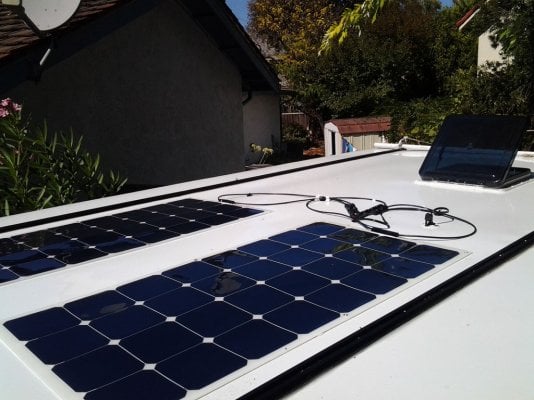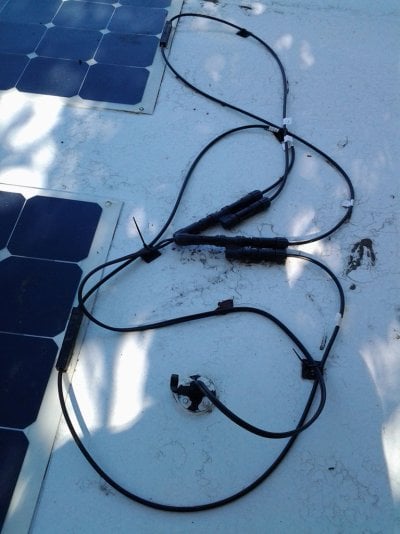In order to accurately measure the drop in voltage due to wire size, you need to have a load connected that is drawing current. If you simply measure the voltage at the solar panel and then at the end of the attached wire with no current being drawn, you will only get the same reading. The voltage reading going to the battery after the controller is the voltage determined by the controller to be the needed charge voltage.
To determine the voltage drop due to the wiring, measure at the panel, then at the entry point into the controller, as the panel is feeding current into the controller. The difference should be the loss due to wire size. Harv








